General Calculations
This page calculates the additional forces required to pull material out of a hopper or bin. This additional tension is mainly due to the shearing action required to pull the material out of the hopper opening. The methods shown and used are quick estimation methods and it must be pointed out that the design of feeders and calculating the loads is a complex subject and requires testing of the material properties which is beyond the scope of this calculation. The methods shown here do not require any testing or special material properties and are provided as an estimate of loads.
Two methods of calculation are offered - Bruff's method and the method proposed in the Bridgestone conveyor design manual. Generally, Bruff's method is more conservative and is the preferred choice for safety.
Read more in the Help Page
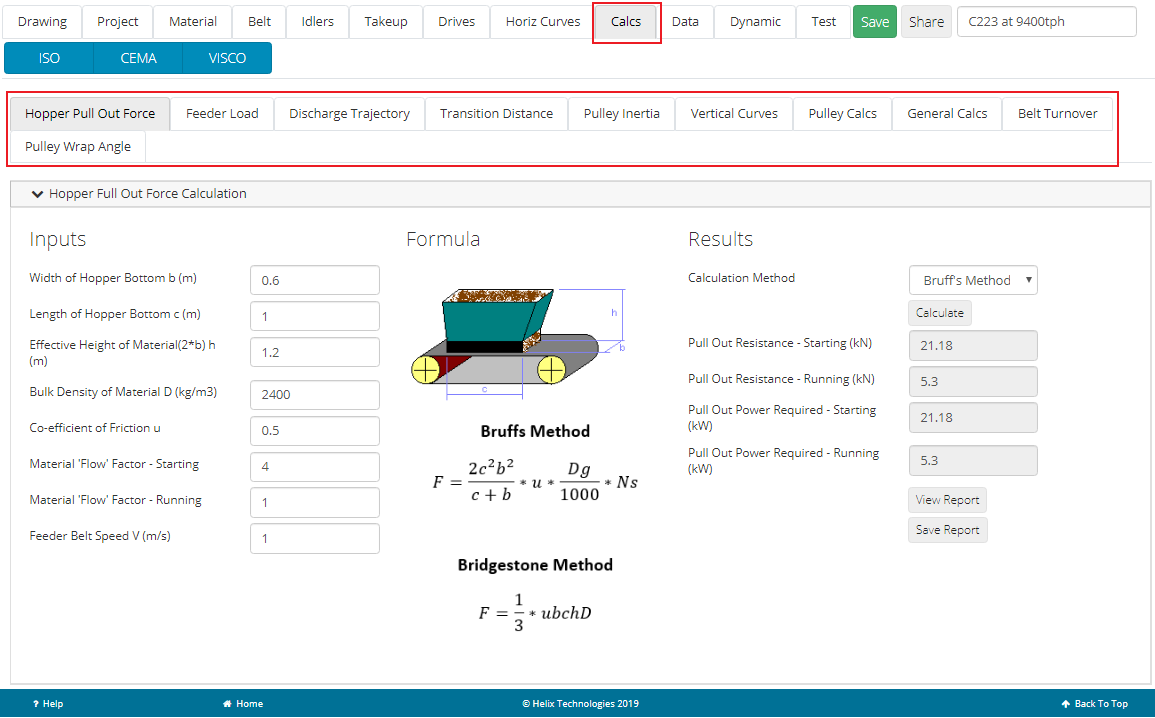
Calculate the Additional Tension required to pull a material out of a feeder, bin or hopper. This additional tension is mainly due to the shearing action required to pull the material out of the hopper opening. The method used here is the 'Theoretical' method developed first by Arnold and McLean and the then refined by A.W. Roberts and others. Many papers have been published on this subject and some are quite complex, however, Helix have refined the inputs to those shown in this page. The material in the feeder will require testing in order to determine the wall friction and effective angle of internal friction - estimates for the inputs can be used in the absence of test results.
Read more in the Help Page
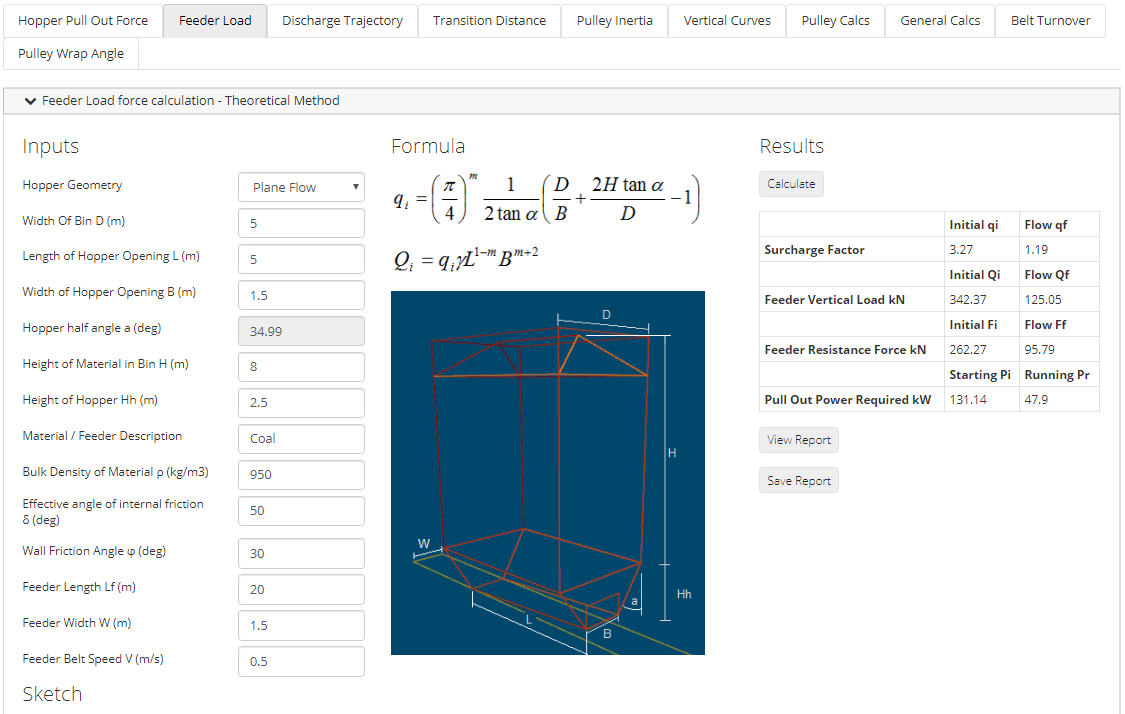
This page allows you to calculate the discharge Trajectory of the material and print the trajectory co-ordinates.
Read more in the Help Page
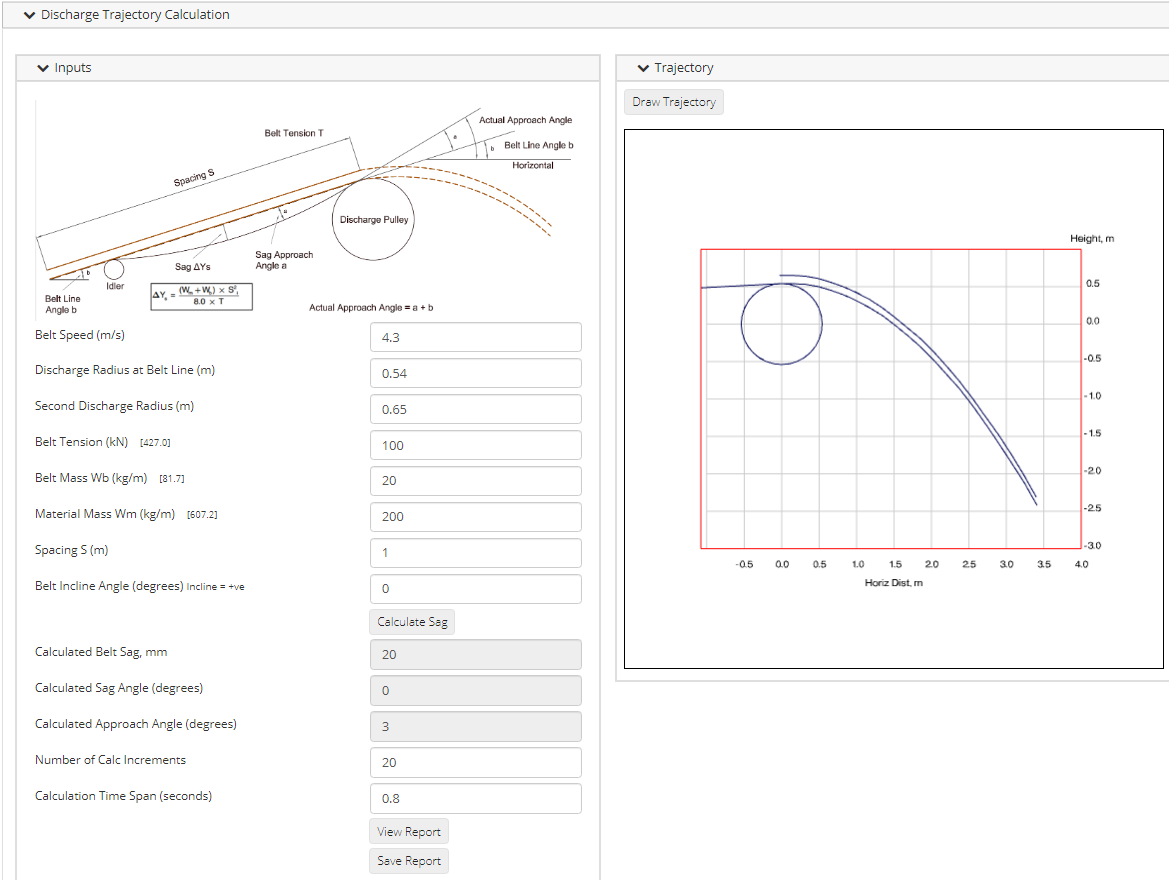
This page calculates the minimum required transition distance to ensure belt edge tension does not exceed the specified values and that the belt centre tension stays positive and does not buckle. These calculations are based on the ISO 5293:2004 standard.
Read more in the Help Page
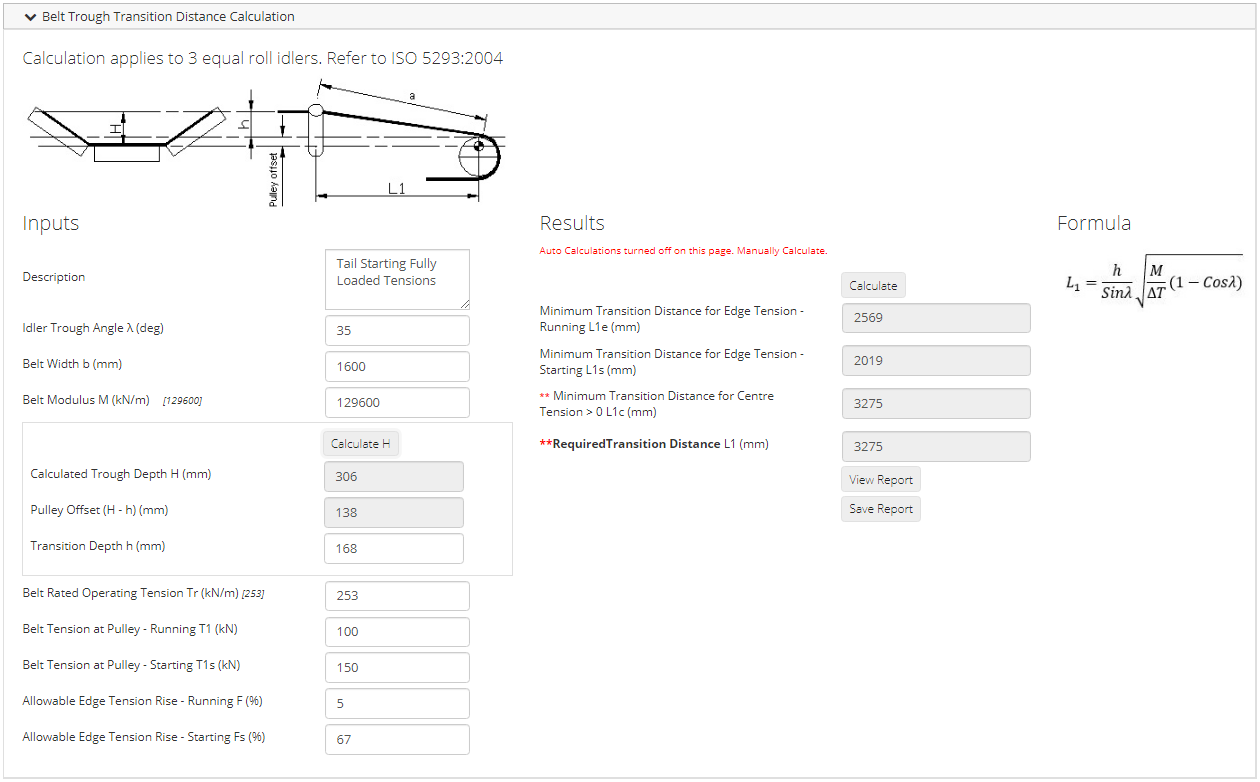
Calculate Pulley Inertia
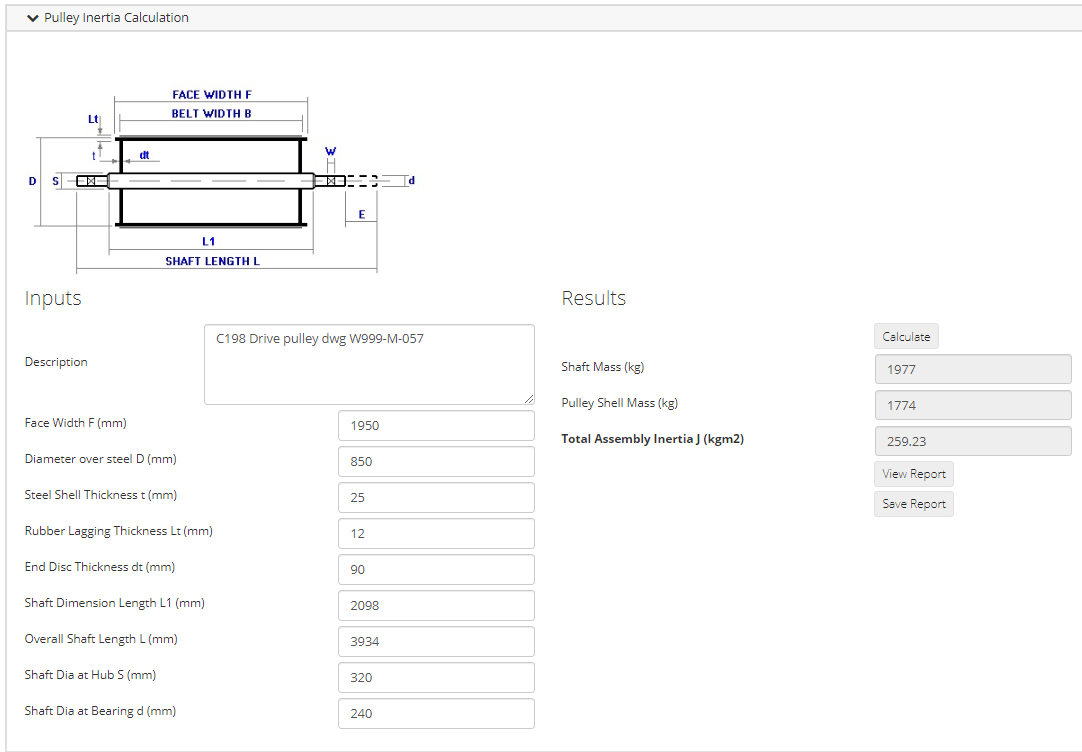
Convex Curve - Radius - Buckling
Calculate the minimum required radius to ensure belt buckling does not occur
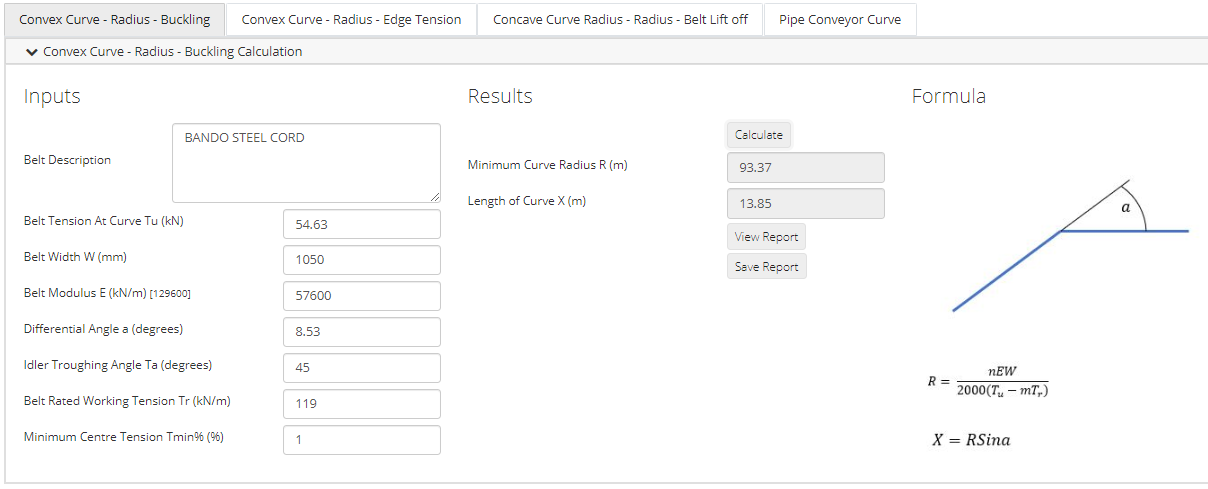
Convex Curve - Radius - Edge Tension
Calculate the minimum required radius to ensure excessive belt edge tension does not occur
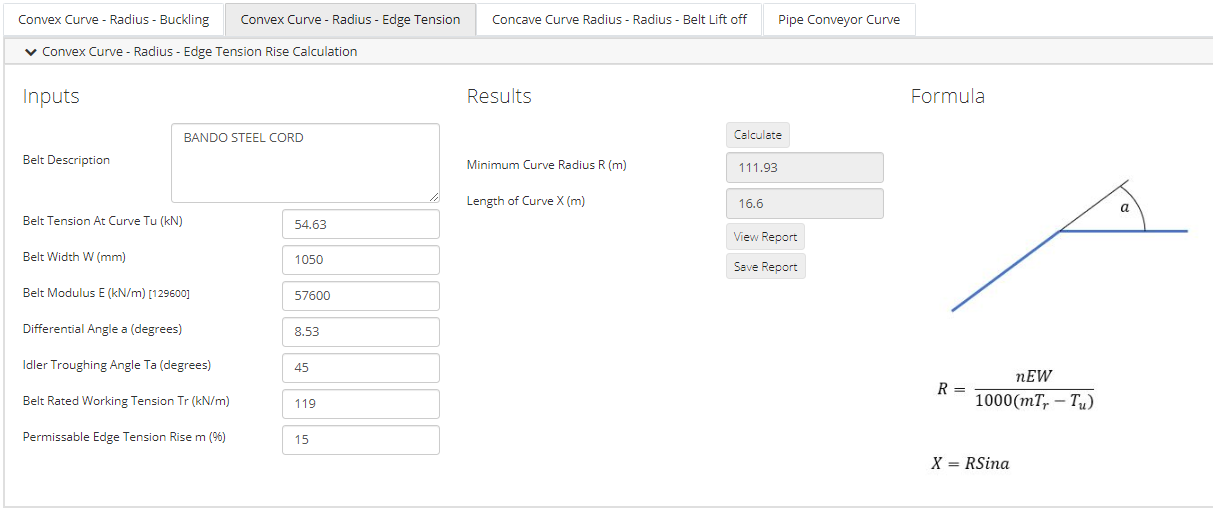
Concave Curve Radius - Radius - Belt Lift off
Calculate the minimum required radius to ensure belt lift off does not occur in concave curves
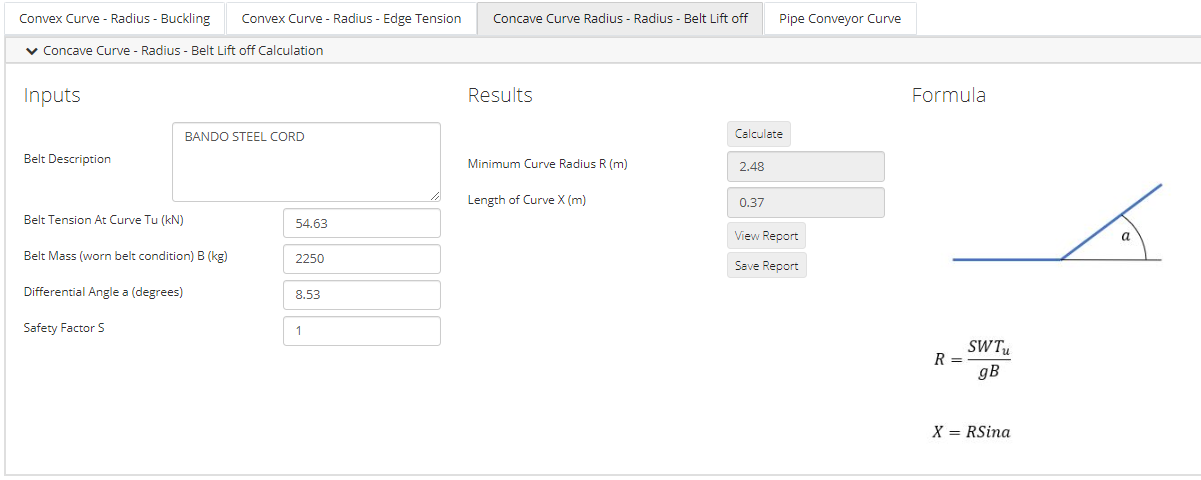
Pipe Conveyor Curve
Calculate the rise in tension in the outer half of the belt. The belt is stretched through a further distance in the outside of the curve and travels through a shorter distance in the inside of the curve.
Read more in the Help Page
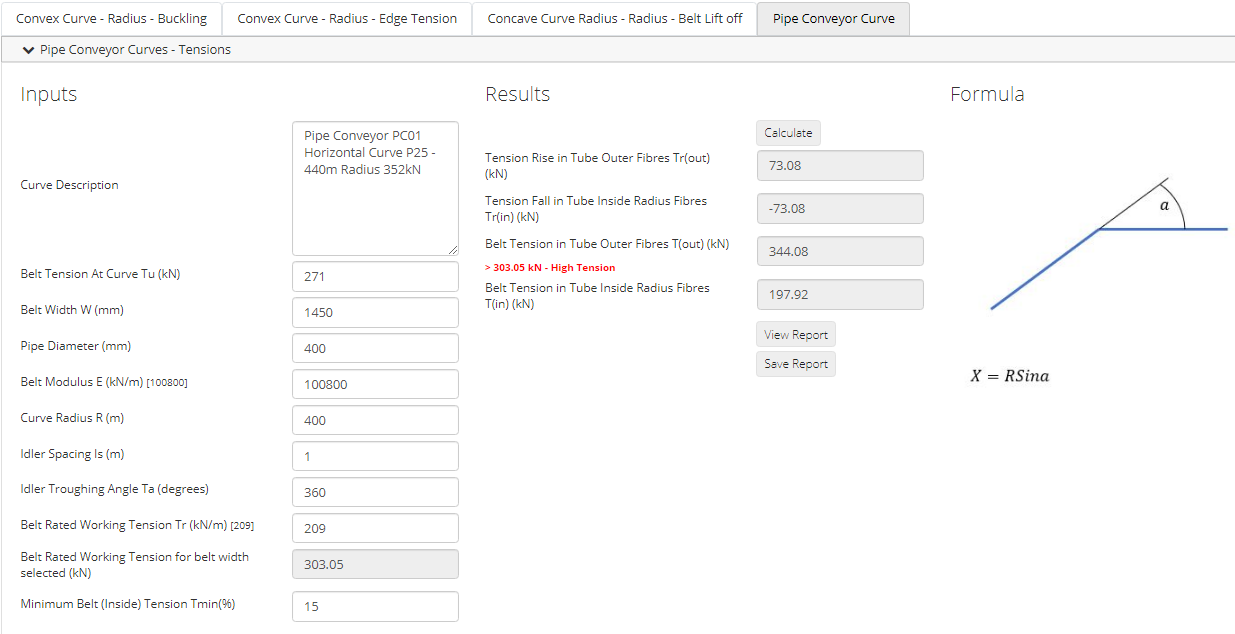
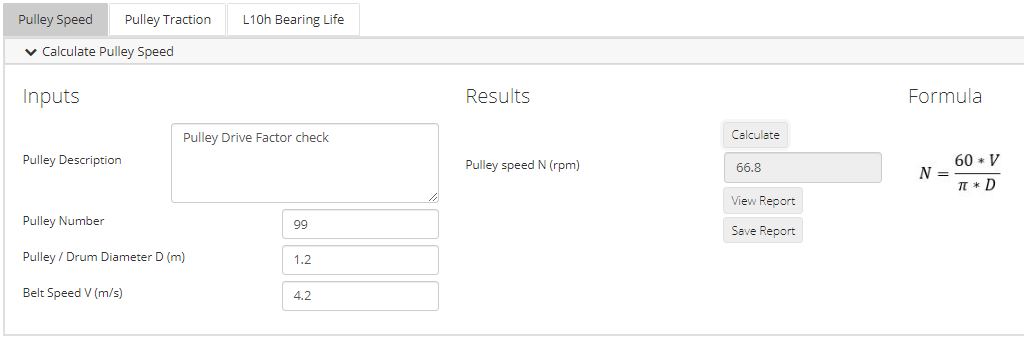
Calculates the Drive Factor Cw and the minimum T2 slack side tension and also the minimum required wrap angle.
Read more in the Help Page
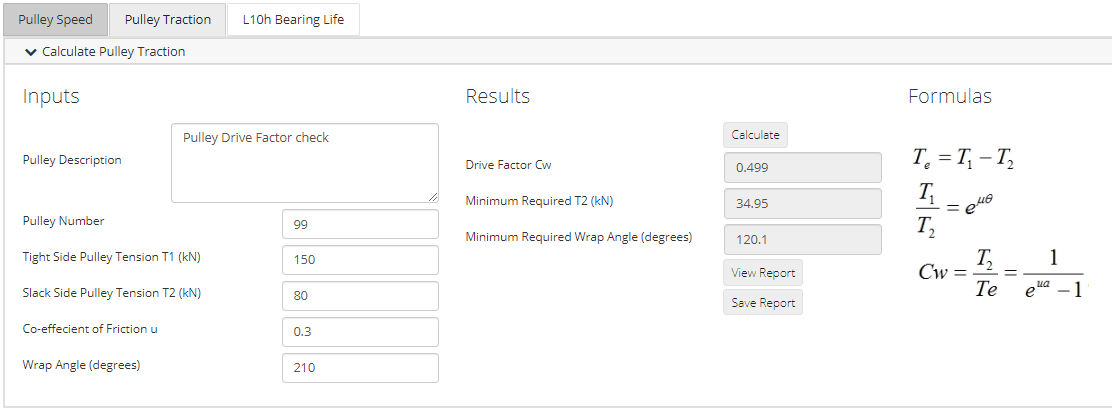
Calculates bearing life. The L10h bearing life calculation provides the amount of hours that 90% of bearings in a sufficiently large group of identical bearings operating in the same conditions will reach or exceed.
Read more in the Help Page
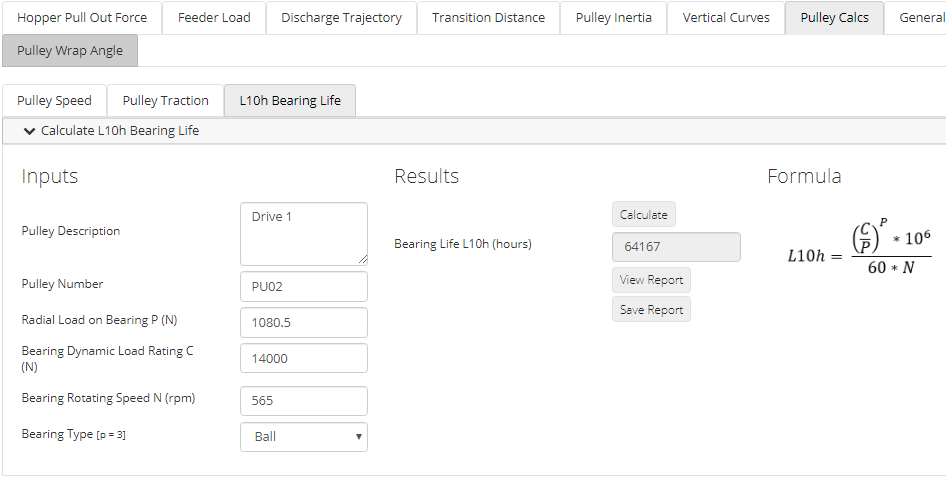
Calculate the motor power from current. This is useful when calibrating a conveyor model with an existing conveyor. If the data that is collected from the existing real life conveyor only has amps use this calculation to determine the power of the motor.
Read more in the Calibrate Conveyor help Page or the Motor Power Quick calculation help page.

Calculate the required distance to safely flip the belt over 180 degrees which is done on the return run of the belt after discharging the material so that the belt cover which is in contact with the idlers on the carry side of the belt is also in contact with the idlers on the return side of the belt.
Read more in the Help Page
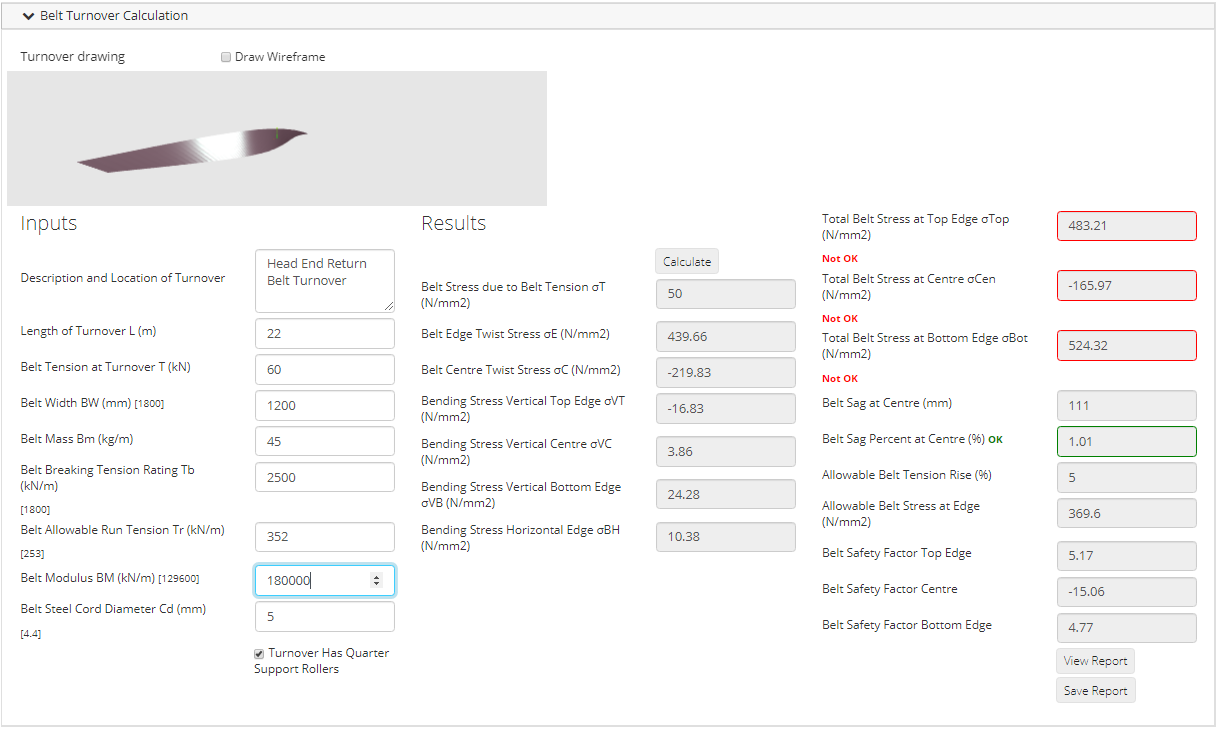
The General calculations are free to use. Register and login, open a demo conveyor file and you can use these calculations. Subscribe to generate reports and save the conveyor file and the associated general calculations.